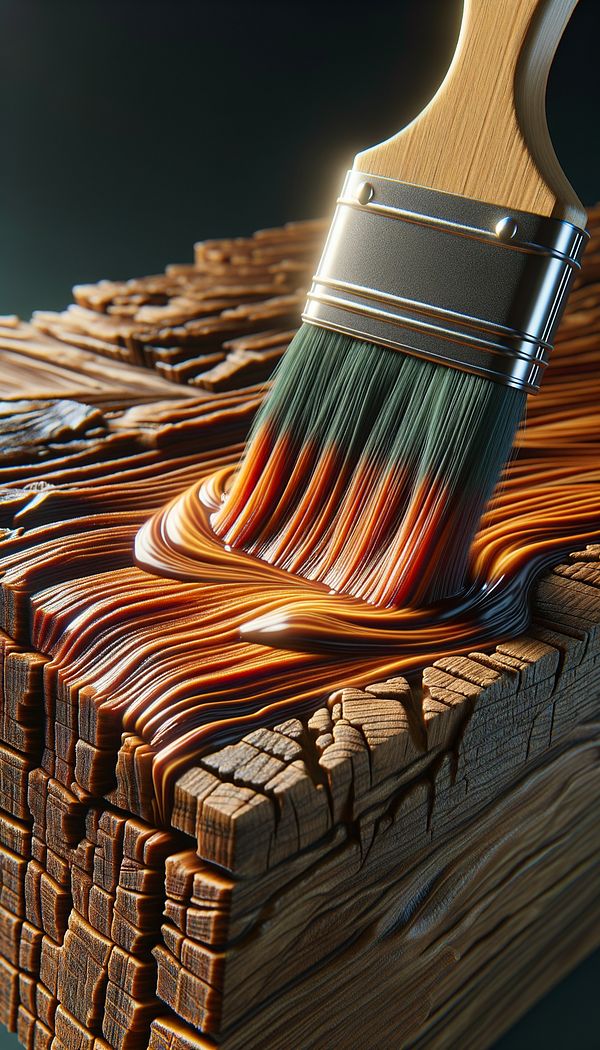What is Staining?
Staining is the application of pigment to a surface to change its color and enhance its grain.
Description
Staining is a finishing technique used in interior design and woodworking that involves applying a pigment or dye to materials, especially wood, to alter their color while allowing their natural texture and grain pattern to show through. This process enhances the beauty of the material and can make it more resistant to damage and wear. Stains come in a variety of colors and types, such as oil-based stains, water-based stains, and gel stains, each offering different degrees of coverage, drying times, and finishes.
When applied to wood, staining can bring out the unique characteristics of the wood's grain, making each piece distinct and rich in appearance. Apart from wood, staining can also be applied to other materials like concrete, fabrics, and even metals, using specific types of stains designed for each material. The choice of stain and application method can greatly affect the final look and durability of the piece. For example, a lighter stain can highlight the natural beauty of oak, while a dark stain can give pine an antiqued look.
The process of staining typically involves preparing the surface by sanding it to smoothness, applying the stain evenly with a brush, cloth, or sponge, and allowing it to penetrate the material before wiping off any excess. This may be followed by applying a sealant or finish to protect the stained surface and enhance its appearance. Proper ventilation is essential during this process as some stains emit strong fumes.
Usage
Staining is commonly used in projects involving wood furniture, flooring, cabinetry, and architectural elements like beams and panels. It's also seen in enhancing the appearance of concrete floors or countertops, bringing depth and color to outdoor decks, and even in textile design.
FAQs
-
Can staining be used on materials other than wood?
Yes, staining can be used on a variety of materials including concrete, fabrics, and metals, each requiring specific types of stains designed for that particular material.
-
How does stain differ from paint?
Stain penetrates and enhances the material's surface, allowing natural patterns to show, while paint typically covers and hides the surface.
-
Is it necessary to seal stained wood?
Sealing stained wood is recommended to protect it from damage and wear, and to enhance the stain’s appearance and durability.
-
Can I change the color of a previously stained piece?
Yes, but the existing stain may need to be removed or thoroughly sanded before applying a new stain, depending on the desired outcome.
-
How do I choose the right type of stain for my project?
Consider the material you're staining, the desired appearance, durability needs, and whether the project is indoors or outdoors. Consulting with a professional can also be helpful.
-
How long does it take for stain to dry?
Drying times can vary widely depending on the type of stain, humidity, and temperature. It can range from a few hours to several days.
Practical Application
To achieve the best results with staining, start by choosing a stain type that is suitable for the material and the desired effect. Prepare the surface by cleaning and sanding it to ensure an even application. When applying stain, work in a well-ventilated area and follow the manufacturer's instructions for application and drying times. Always wear protective gear, such as gloves and masks, to safeguard against harmful fumes. Test the stain on a small, inconspicuous area first to gauge the final color. Remember, it's easier to apply additional coats to darken the color than to lighten a too-dark stain.
-
Furniture Types599 articles
-
Decorative Techniques322 articles
-
Materials & Textiles360 articles
-
Construction & Building86 articles
-
Wall Treatments & Finishes157 articles
-
American OrientalAmerican Oriental is a design style that merges traditional American design elements with Oriental influences.
-
HierarchyHierarchy in interior design refers to the deliberate organization of elements in a space to signify their importance.
-
Finger PlatesFinger plates are protective plates mounted on doors to prevent wear and tear from frequent handling.
-
BackingBacking refers to the material or support layer behind the visible layer of a product.
-
DownDown refers to the soft layers of fine feathers found beneath the tougher exterior feathers of birds, often used for insulation and padding in a variety of interior design elements.
